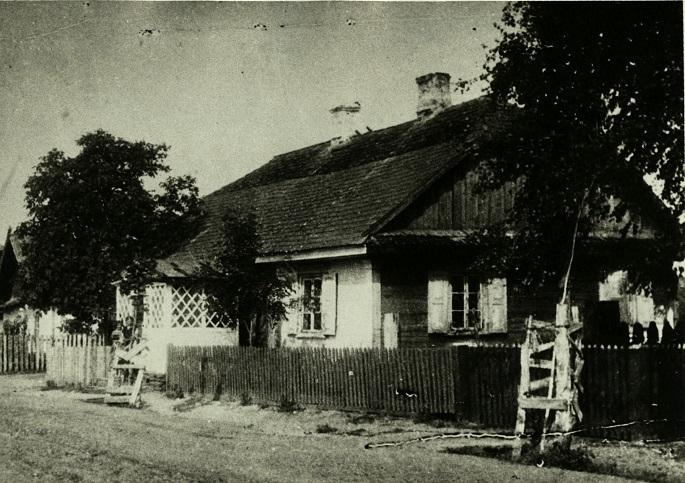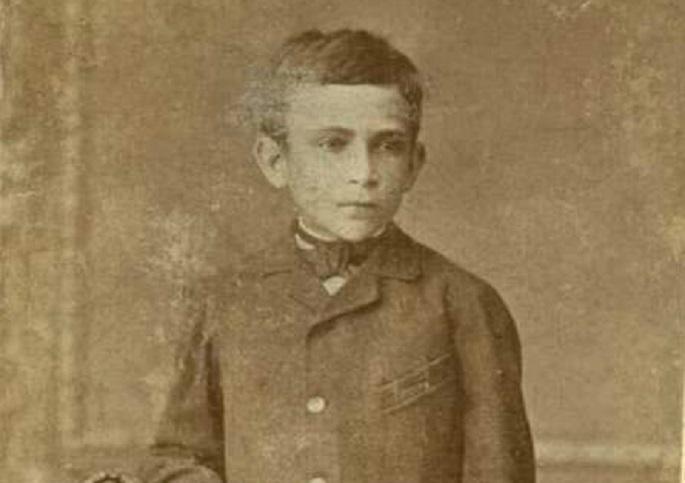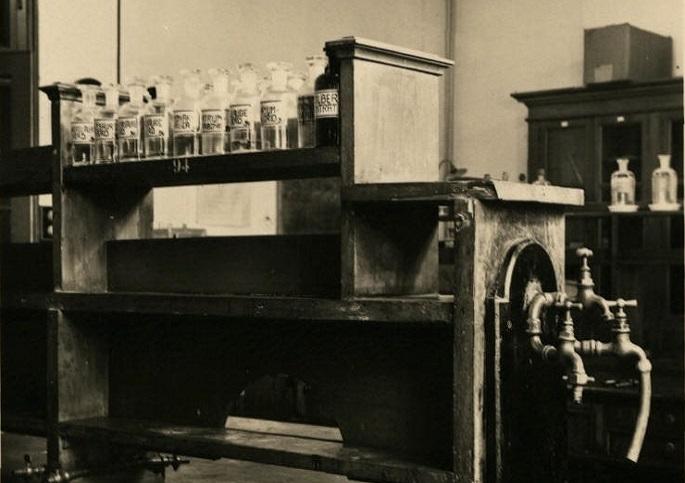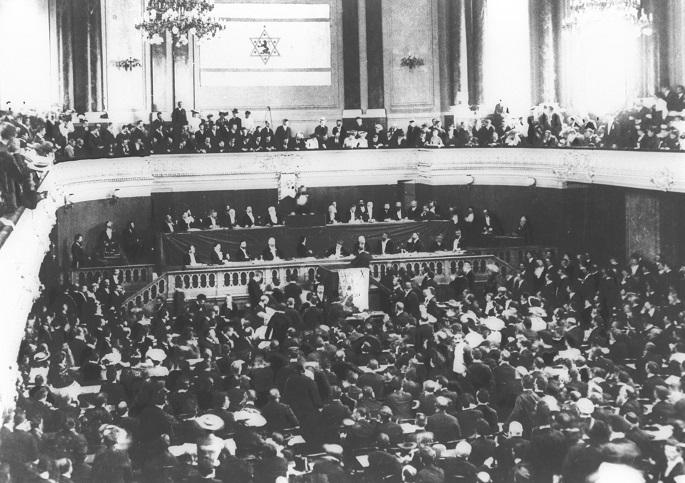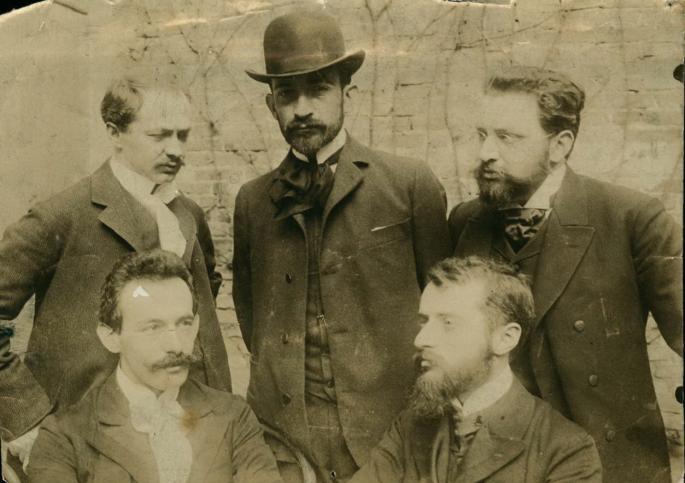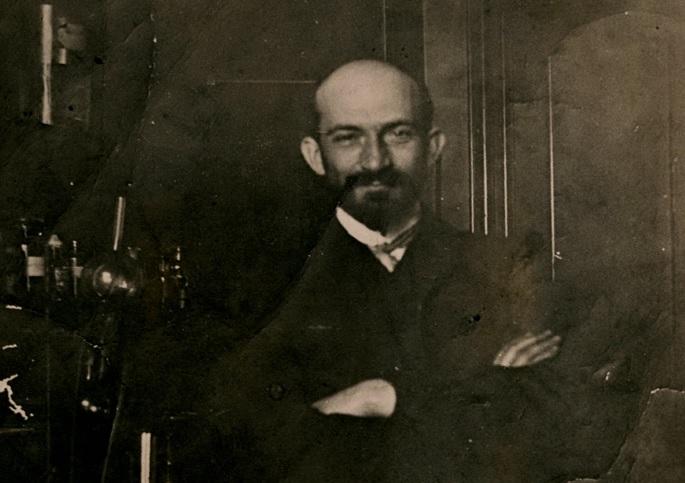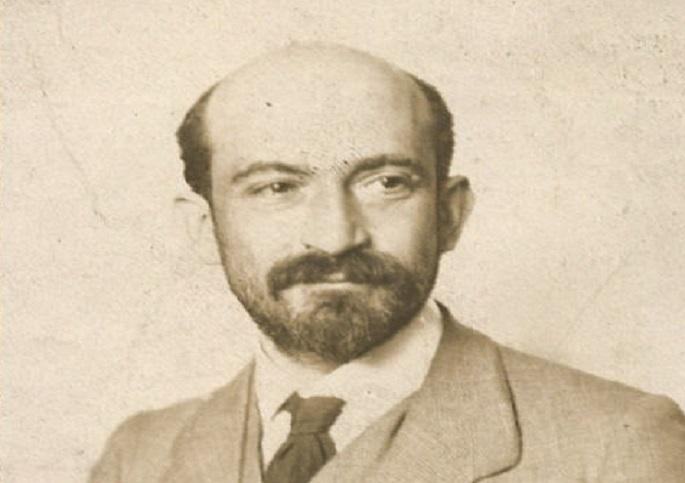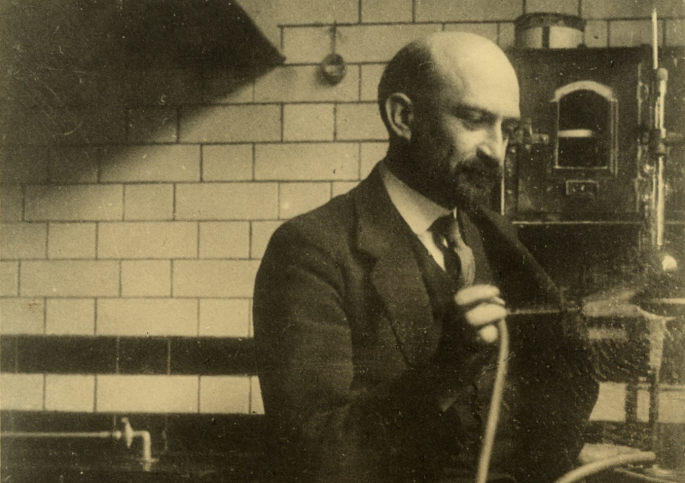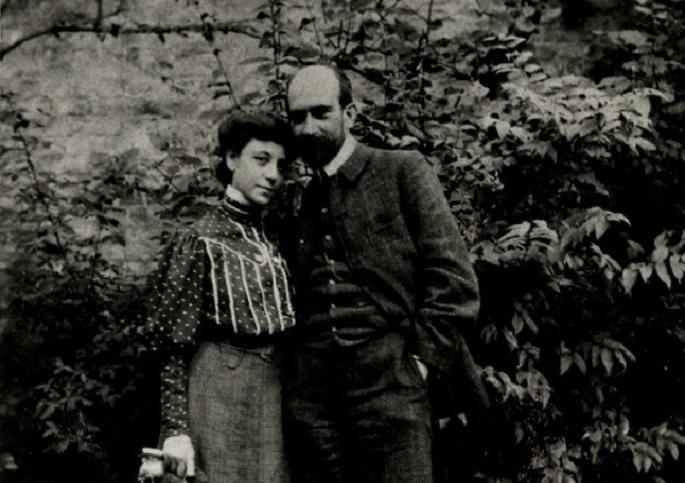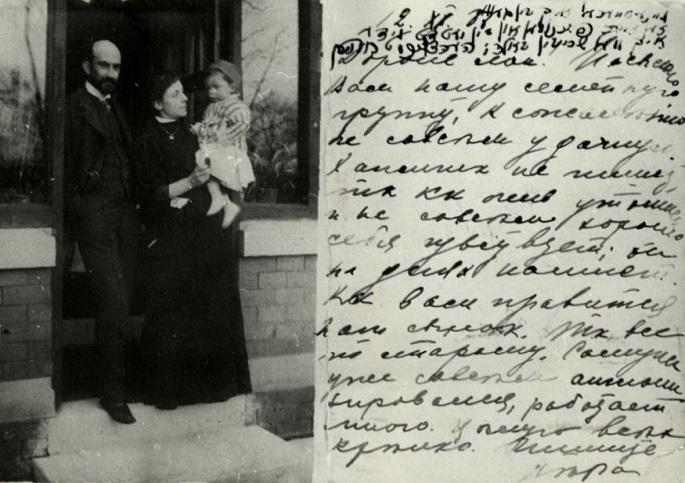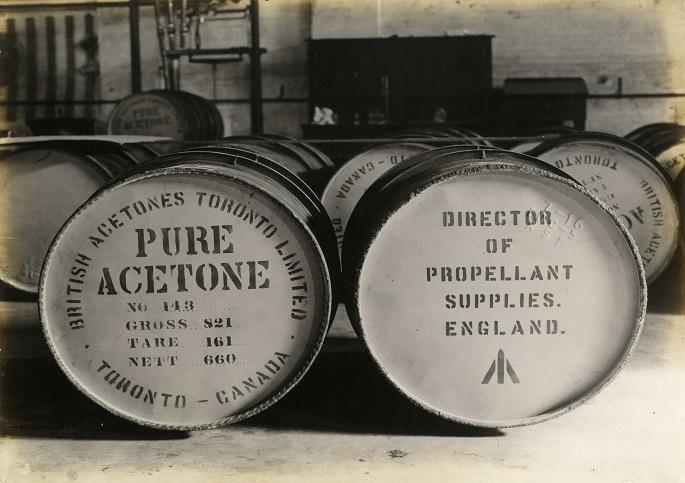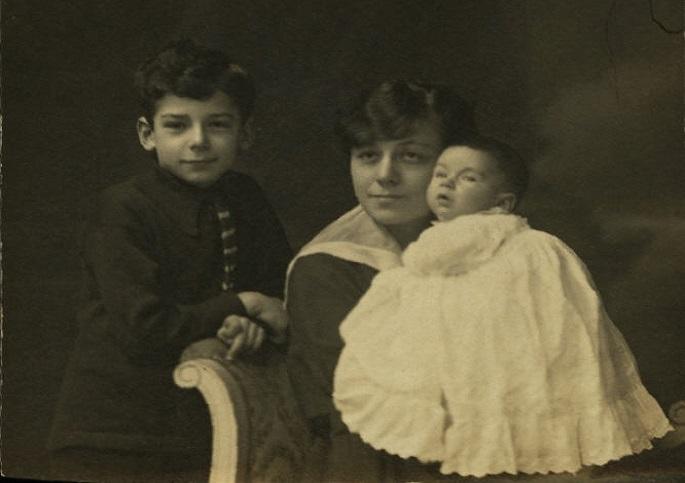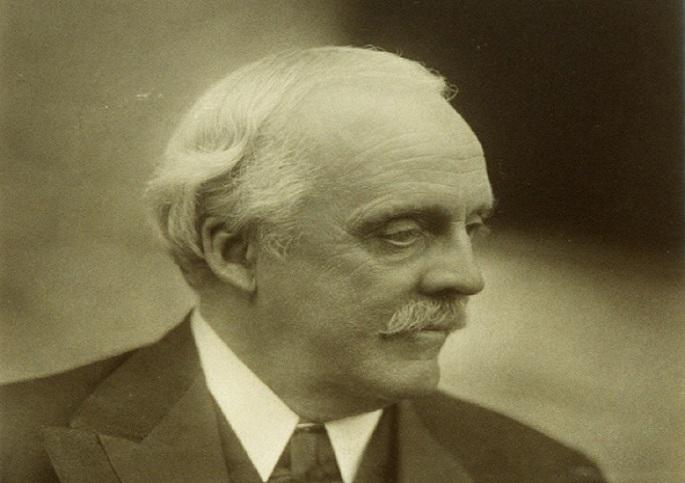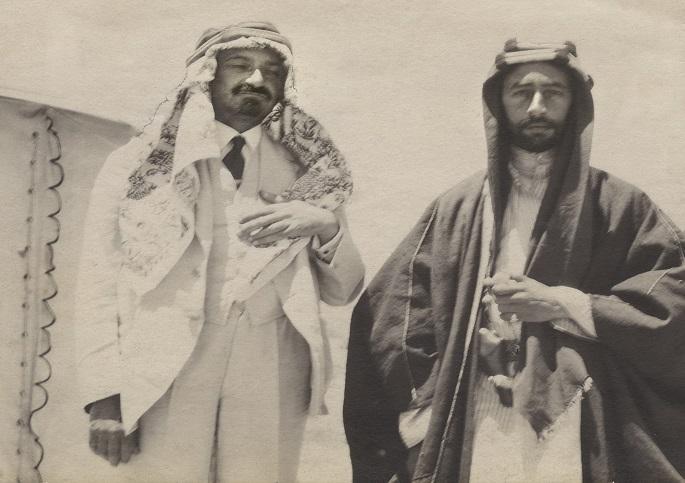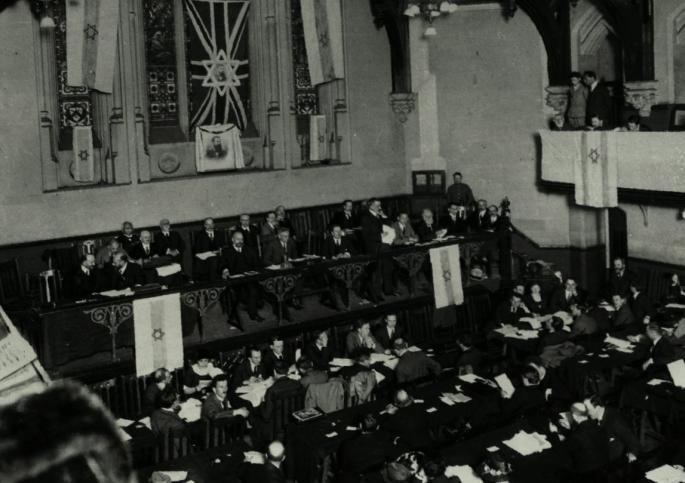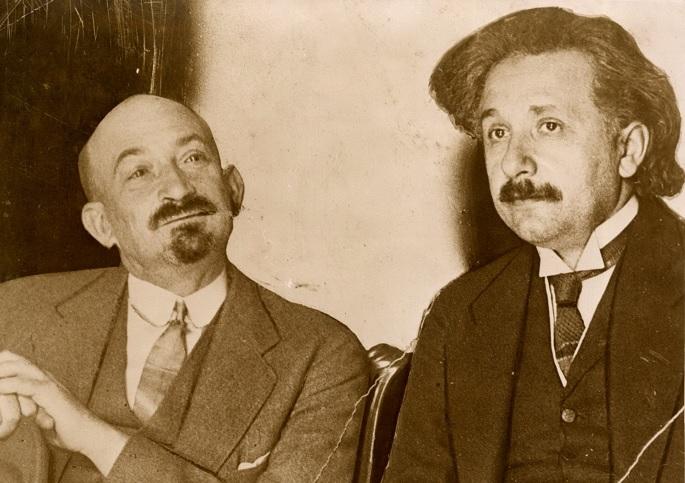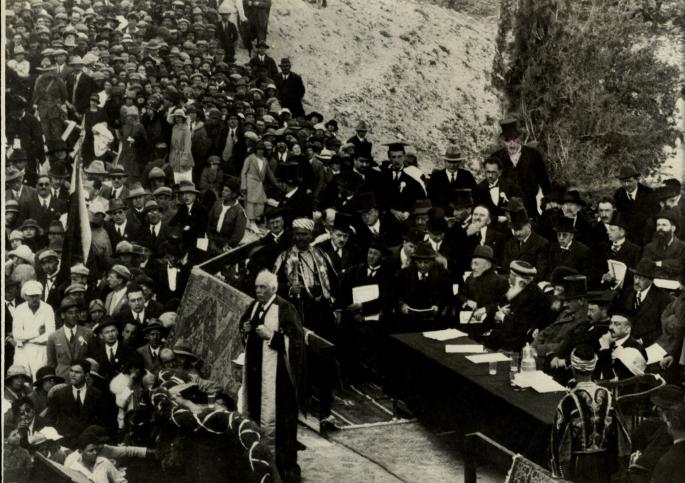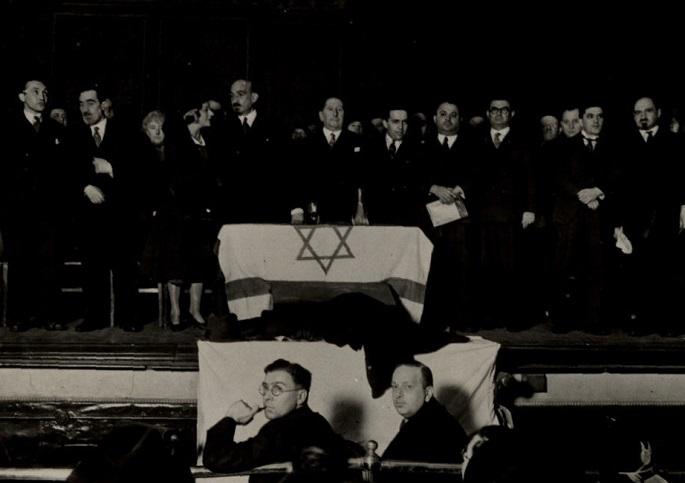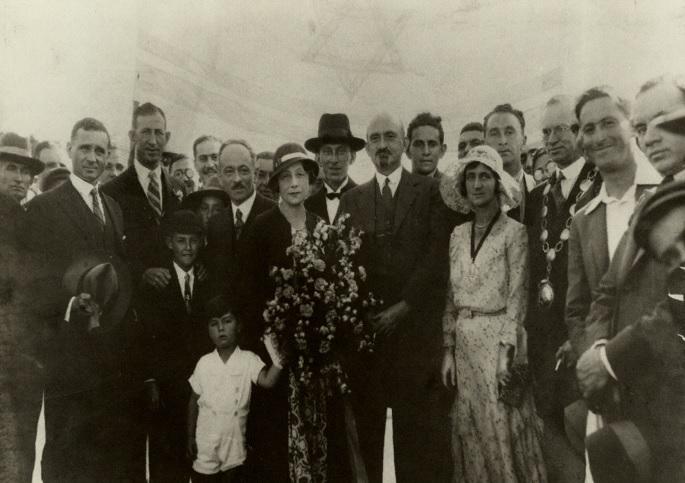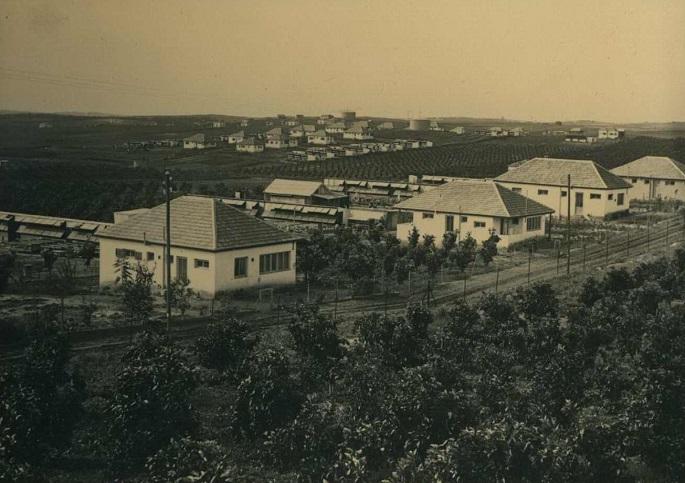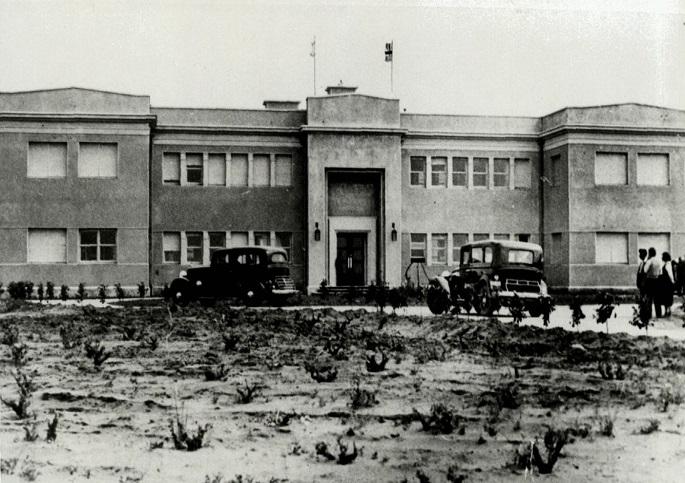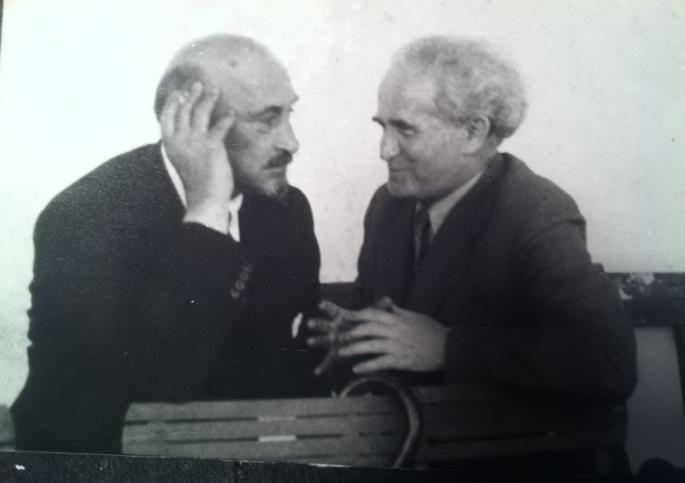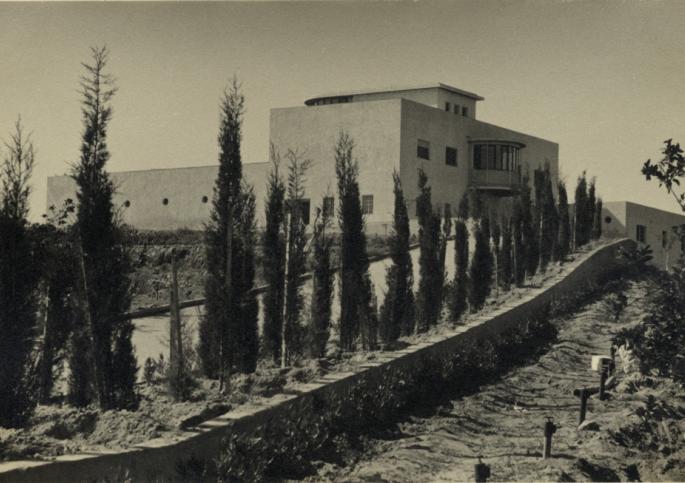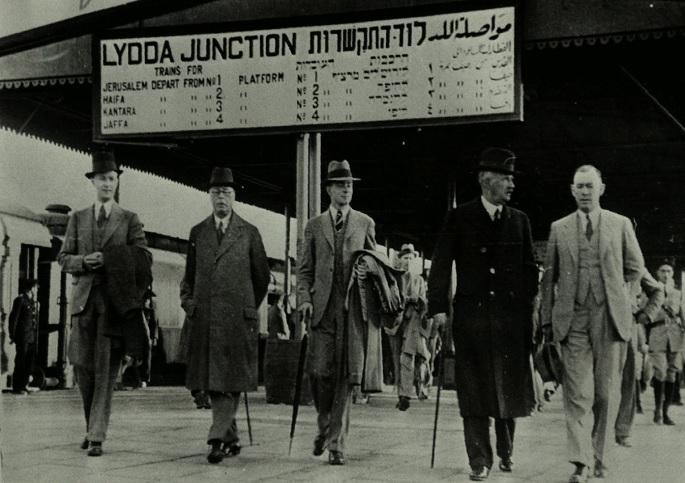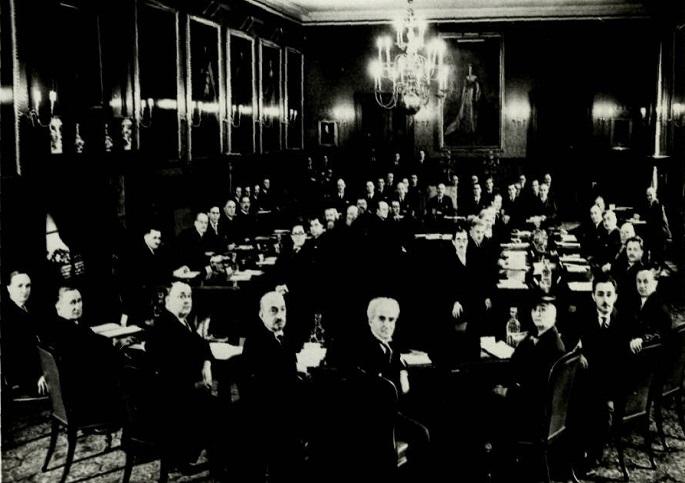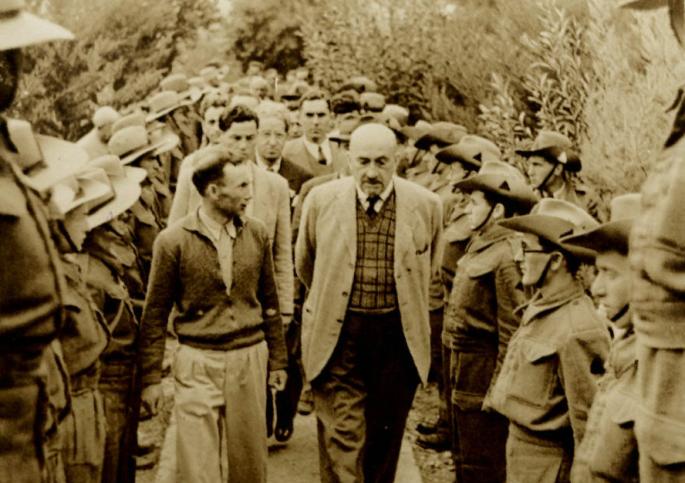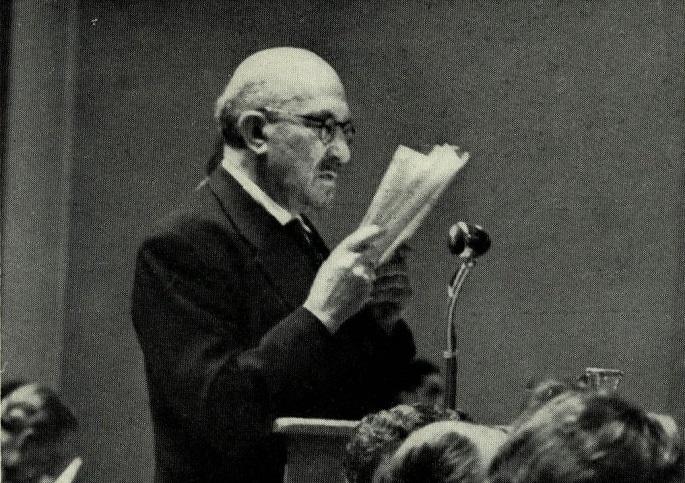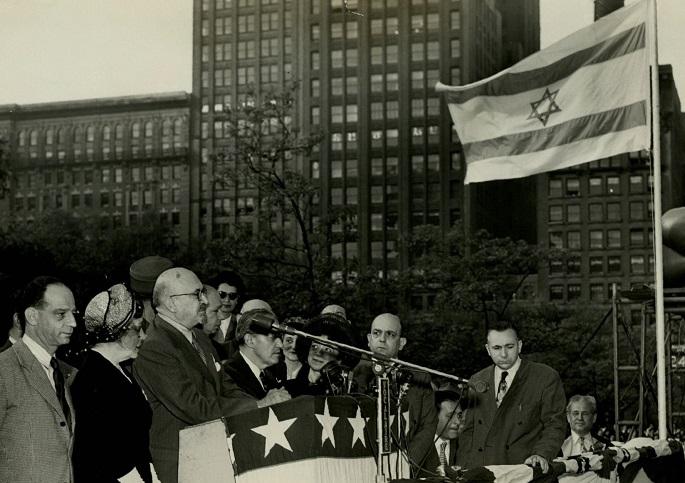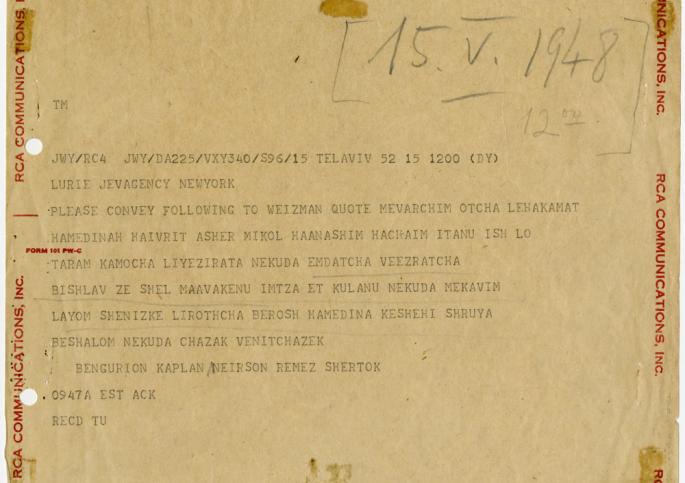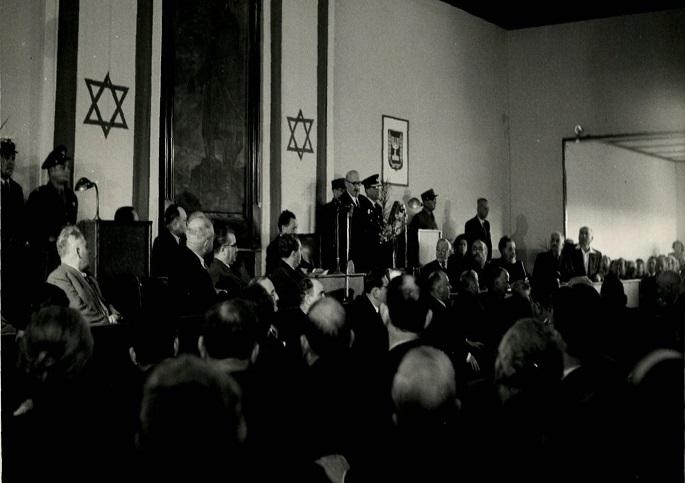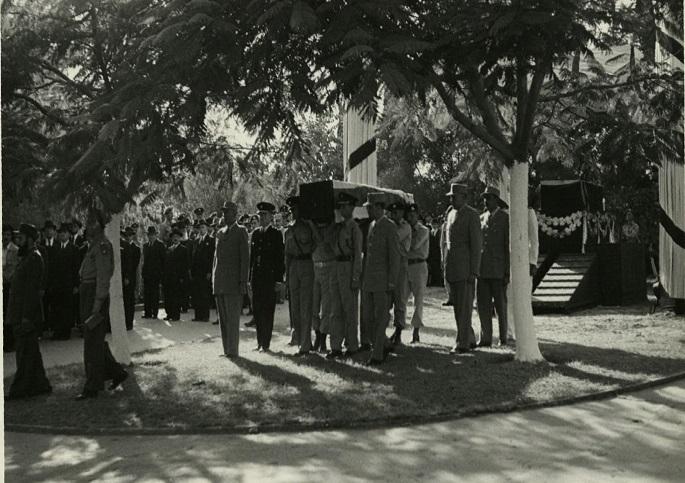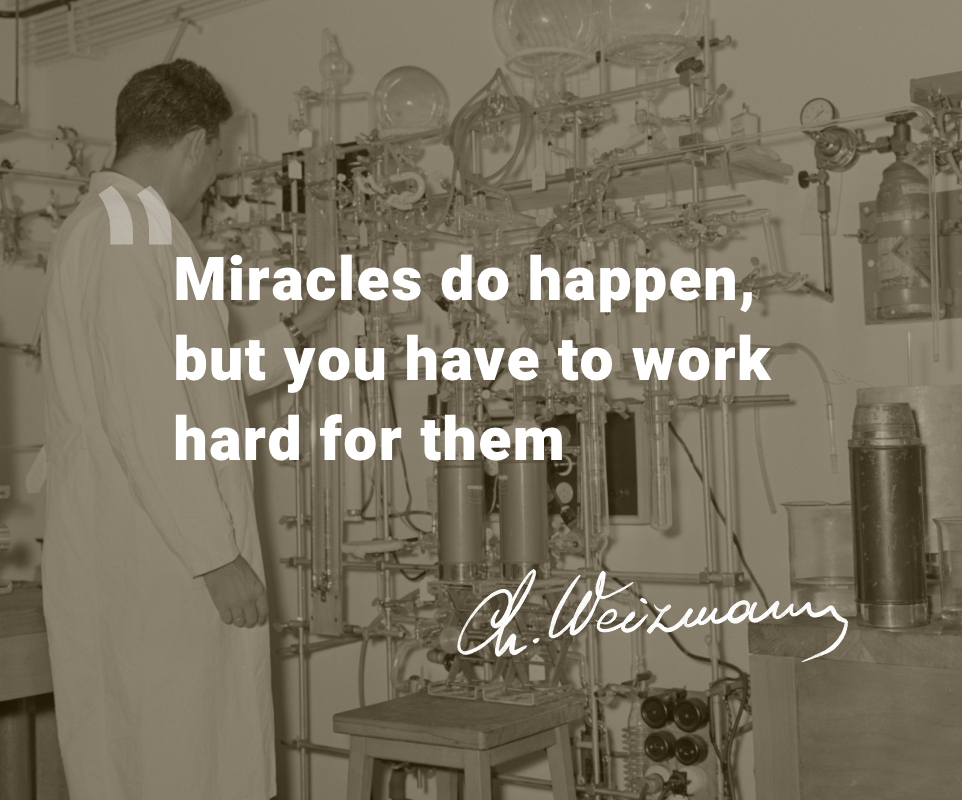Dr. Weizmann heads the Zionist Commission for Palestine, a delegation that traveled to Palestine at the initiative of the British government with the aim of making recommendations regarding the settlement and development of the country. In a letter to his wife, Vera, he described what he was seeing, “The difference between what you can see today in the settlements, and what it was possible to see when I was first here eleven years ago, is astounding. Today, these settlements are filled with life. Real Jews are living here. They are no longer a legend; they are real!”
Dr. Weizmann meets with Emir Feisal, leader of the Arab Revolt.
“It was a beautiful, moonlit night—with the moonlight of the Palestine. I looked out, from Moav, onto the Jordan Valley, the Dead Sea and the mountains of Judea, and as I’m standing there, I’m suddenly filled with this sense that 3,000 years have vanished. Here I am standing on the same land, with the same mission, just as our forefathers did at the dawn of the history of my people.”
The Emir states that he longs to see Jews and Arabs working together with a common vision. In his opinion, the destiny of both nations is connected to the Middle East, and, against their will, it is dependent on the goodwill of the great powers. The two sign the Weizmann-Faisal Agreement, which is never implemented.
Dr. Weizmann lays the cornerstone for Hebrew University at Mt. Scopus, in Jerusalem. In his speech, he says, “What is the significance of the Hebrew University? What will be its role? From where will it draw its students, and what languages will they speak here? At first glance, it might seem like a paradox that a land that has such a small population, a land that still needs everything done in it, a land lacking basic needs such as plows, roads and ports, that in such a land we are establishing a center for spiritual and intellectual development. But the paradox does not exist, as such, if one who knows the soul of the Jew.”
